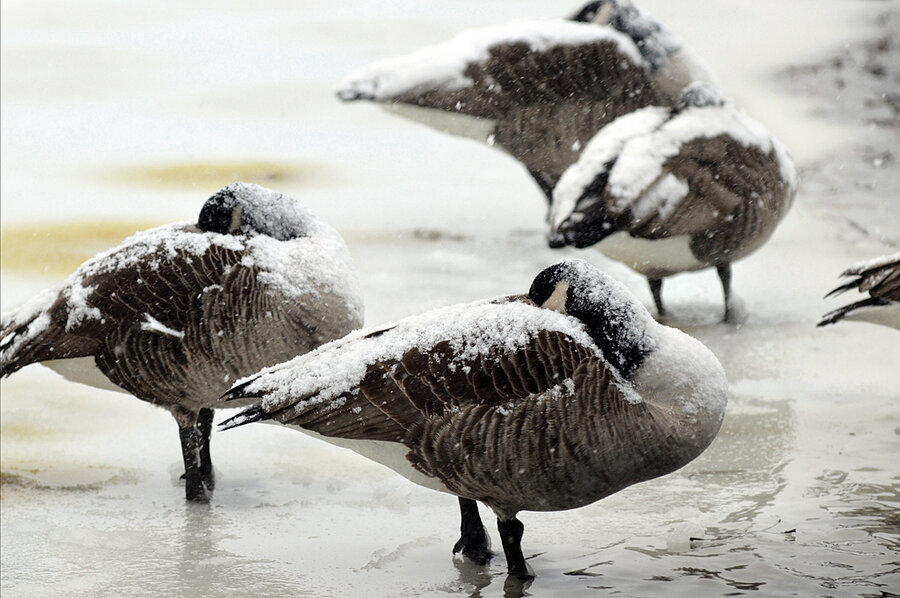Spring migration's hidden hazards
Loading...
I was out on the deck, trying to get a charcoal fire burning in the grill while a thin rain turned to sleet, then back to rain. While the drops made their sharp clattering noise as they spattered on last fall's dry leaves, I could also hear the honking of a small flock of Canada geese coming from somewhere in the low clouds. There have been a lot of geese moving around lately, usually in flights of just a dozen or so birds. The enormous flocks of hundreds or thousands that migrate up the Missouri Valley have not turned up yet.
This changeable season poses similar challenges for me and the geese, though the stakes for the geese are much higher. If the weather turns from early spring back to late winter, and the rain switches overnight to sleet and snow, I will be inconvenienced tomorrow. A few inches of snow would make the drive to work slow and unpleasant. A half inch of ice under that snow would make the hill to the Interstate impassable, and I'd have to wait for the salt and sand trucks to do their work.
For the geese, this change of season is much more perilous. Somewhere up there in the clouds, winging through pellets of ice, unable to see the ground or, perhaps, one another, those geese are trying to decide whether to press on or find the best roost they can to wait out the changeable weather.
Aldo Leopold, a biologist who knew well the volatile weather of the Central Plains, described the geese's dilemma in one of the best sentences of nature writing – "a migrating goose, staking two hundred miles of black night on trying to find a hole in the lake, has no easy chance of retreat."
In a half hour or so, my fire will have cooked down to coals and I'll grill a couple of pieces of fish. Then I'll go inside and separate myself from the rain or sleet until morning. Between me and the weather there will be layers of shingles, sheathing, insulation, and drywall. Only by listening very carefully to the sound of drops hitting a windowsill will I know whether I'll find snow, rain, or ice at sunrise.
Meanwhile the geese stroke on through the night. Pellets of ice will sting their beady little eyes. Moisture will accumulate on their slick feathers then run off into their slipstream. If the sleet becomes too thick they might make a forced landing in some field, only to find the plants or spilled grain from last fall's harvest that could have been food glazed with ice.
Tomorrow, on the drive to work, I might see these geese, or others, standing in a harvested field or paddling around in an open patch of water in the borrow pit that was dug to provide earth to raise the highway over the floodplain of one of the Missouri River's tributary streams. I'll try to remember their call from this night, and wish them safe passage tomorrow.





